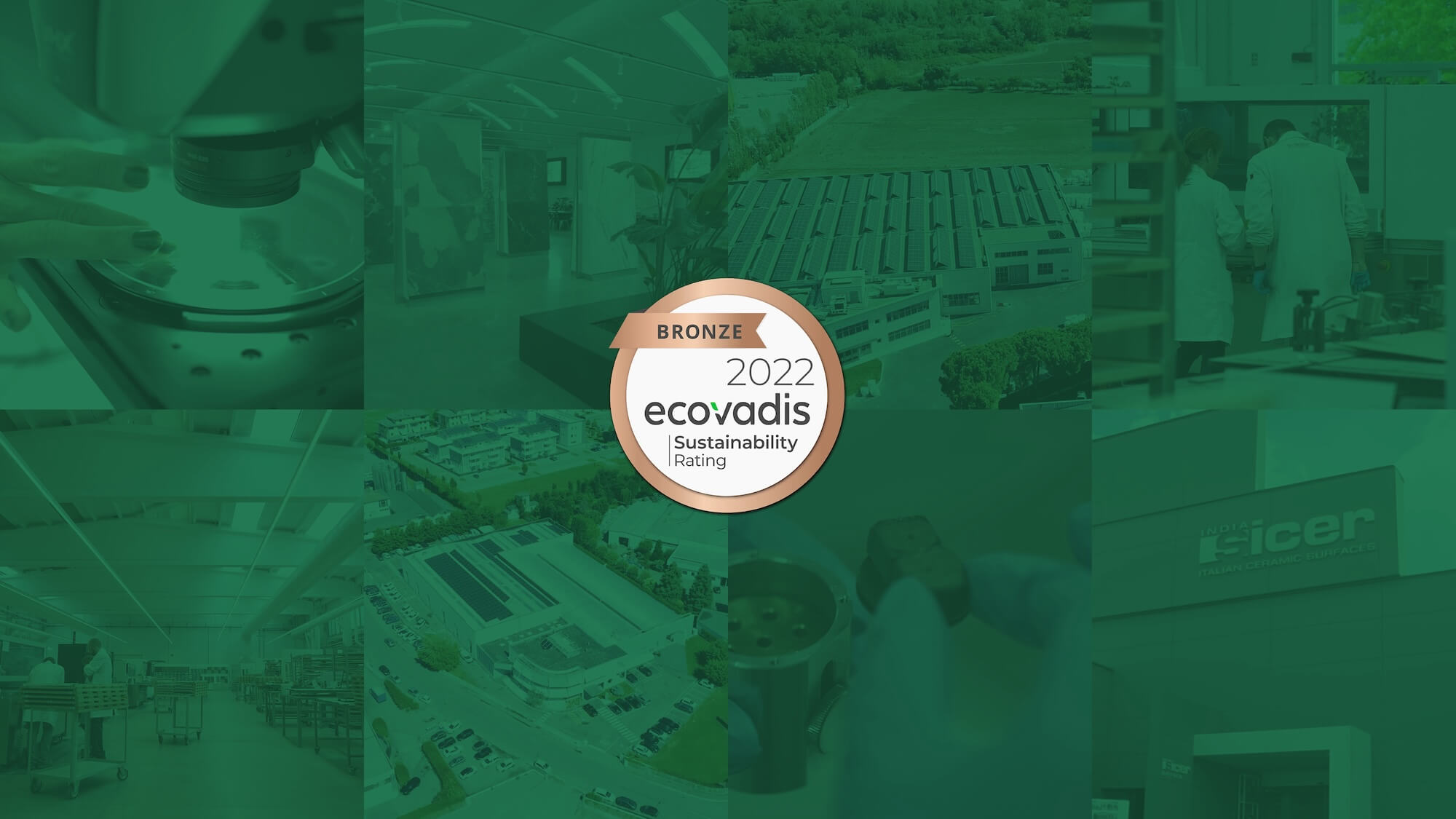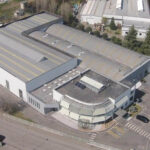The environmental issue has become part of our everyday life. Whether small or large daily gestures, private citizens or large corporate or political decision boards, global warming is affecting everyone, at every level.
Establishing a priority scale in dealing with this problem is extremely complex and there is certainly no one-size-fits-all solution, which is why the UN 2030 Agenda was created. Through 17 thematic areas, it outlines a number of global aims related to sustainability issues, not only on a strictly environmental level but more generally projected towards respect for everything that surrounds us, with the manifest goal of building a better planet and a better society for future generations.
In this sustainability path, everyone is called upon to play their part, ‘adopting’ the aspects that best suit their own reality, their habits, their individual nature.
Increasing numbers of companies are embarking on this path of renewal, setting themselves short, medium- and long-term goals linked to one or more points of the UN 2030 Agenda. Sicer since 2022 has decided to take up this challenge through a multi-year project under the guidance of ECOVADIS, a consulting company founded in 2007 to steer its customers towards corporate sustainability goals. In its first year of evaluation, Sicer obtained a Bronze Rating following the parameters dictated by Ecovadis. Certainly no arrival point so much as a starting position for our company, but where will this road lead in the near future? Before we find out, we need to understand better what the UN 2030 Agenda is.
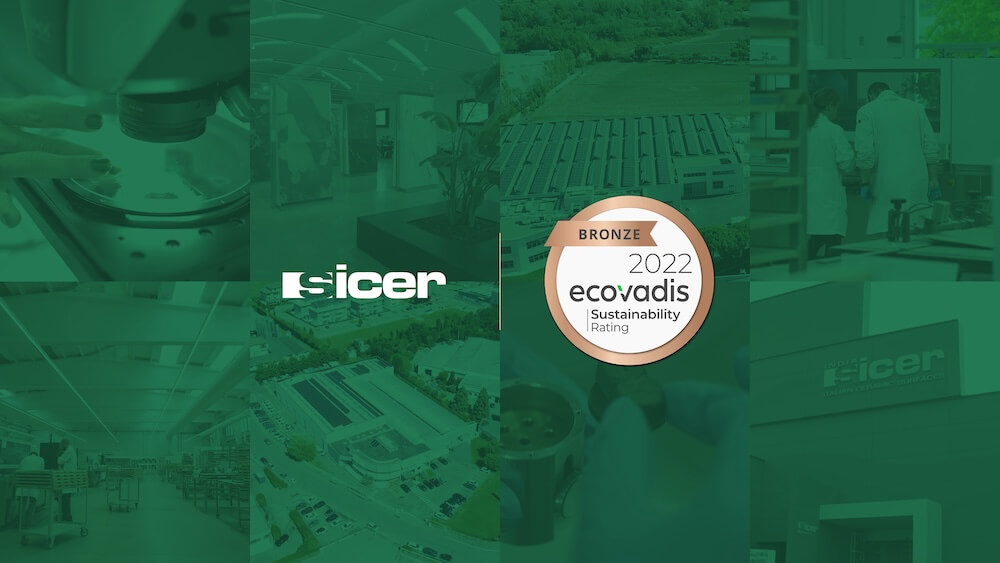
Decomposing the change: the UN 2030 Agenda
On September 25, 2015, the governments of the 193 member countries of the United Nations signed the UN 2030 Agenda, consisting of 17 Sustainable Development Goals (SDGs) framed within a broader programme of action consisting of 169 targets or goals, associated with them, to be achieved by 2030.
The SDGs have a universal character and are based on the integration of the three dimensions of sustainable development: environmental, social and economic.
It is important to emphasise the ‘universal’ nature of these goals, because while the commitment is primarily a matter for national governments, the document itself also serves as a guide for all those who wish to engage in the improvement of one or more of the goals on the Agenda, so that everyone can tackle the problem in their own small way and feel part of a shared global effort.
We are not going to list all the goals of the UN 2030 Agenda, rather we will try to tell you the points on which Sicer is focusing to improve itself and the environment around it.
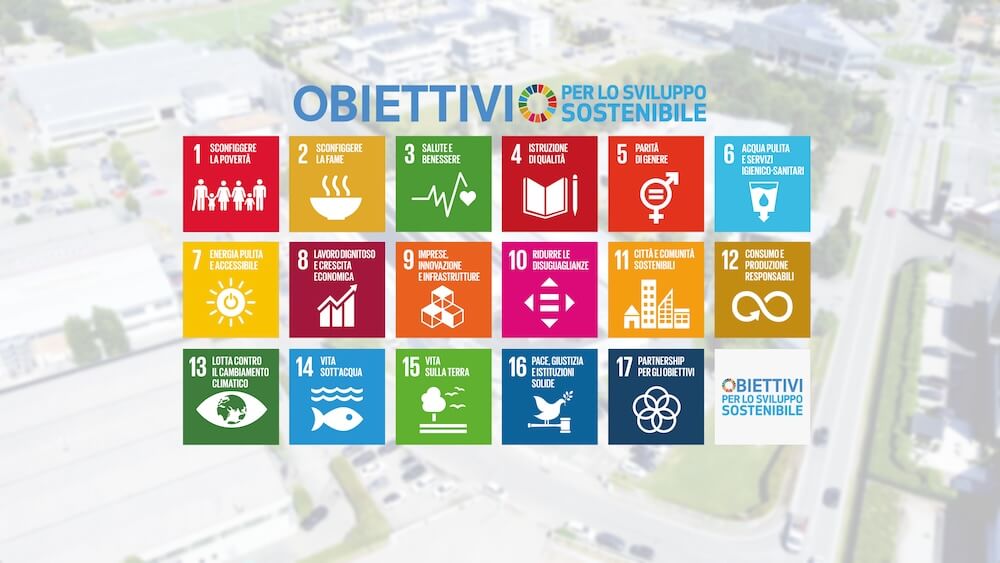
The Goals ‘adopted’ by Sicer
Sicer has decided to create 3 macro-groups of intervention with regard to the goals of the UN 2030 Agenda, 3 thematic areas concerning firstly sustainability of the product and the manufacturing process, secondly environmental sustainability and thirdly social responsibility. Starting from these topics, there are a total of 8 goals on which Sicer has set itself concrete objectives, with applications in both the short and long term:
- Product and process sustainability
Goal 9: Business, innovation and infrastructure;
Goal 12: Responsible Consumption and Production;
Goal 13: Fight against climate change. - Environmental Sustainability
Goal 6: Clean water and sanitation;
Gola 7: Clean and affordable energy;
Goal 13: Combat climate change. - Social Responbility
Goal 3: Health and Well-Being;
Goal 8: Decent Work and Economic Growth;
Goal 17: Partnership for the Achievements.
In this article we will analyse in detail how Sicer has addressed the first two goals of this list, specifically the ‘sustainable challenges’ related to the product, the production process and the environment. What concrete actions were implemented and what results were achieved? Let’s find out starting with the first point.
Product sustainability: the basis for an industrial transition to sustainability
In recent years Sicer has decided to join various funds for innovation projects related to both the product and the production process, in the conviction that this is the right path to take for better management of raw materials, the production process and energy resources.
This new direction aims at decreasing environmental impacts and increasing internal resources that can be dedicated to further sustainable projects, with the desire to create a virtuous circle that is increasingly aimed at a clear transition of the company towards the UN 2030 Agenda principles.
The R&D team is certainly at the heart of this process, thanks above all to this department’s focus on the continuous evolution of products and production processes. By its very nature, the R&D Department is inclined to participate and adhere to public funding calls directed at technological, industrial process and sustainable product development. In this sense, two research projects financed by the MISE have already been activated in 2022.
The first project
The first project focused on reducing the firing temperature of the bodies, reducing the crystalline free silica content of the ceramic substrate for sale, and reformulating products, with the aim of significantly reducing the emission of carbon-based compounds during the high- and low-temperature firing of ceramic products.
The second project
The second project set itself three specific objectives:
- Optimise the shot blasting process, reducing the energy consumption of the machinery and the waste destined for disposal;
- The feasibility study for the use of hydrogen in combustion processes within the plant;
- The feasibility study of oxygen production from air
The Sicer Patents
In addition to the two MISE-funded projects, Sicer now holds 11 patents that refer to production processes, individual product formulations, as well as how frits, inks and digital materials are used. This know-how has enabled the development of further in-house research, both in individual products and production processes, aimed at providing increasingly innovative solutions.
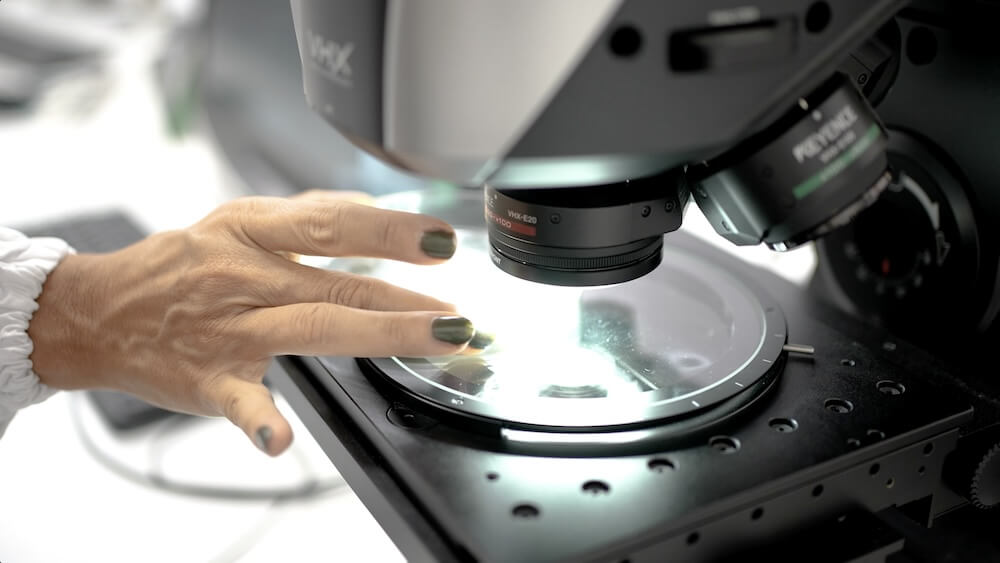
Are Sicer’s products more sustainable today?
What has this set of financed projects and the set of patents held by Sicer led to? In an internal report at the end of 2022, an overall picture of the impact of all this work was outlined. The results emerging from this analysis show a very encouraging picture for the future.
80% of the raw materials used to make our products come from natural sources, 89% of Sicer’s in-house processing by-products have been recovered, we have seen a 40% reduction in raw material suppliers over the last 3 years, despite rising costs due to the geopolitical situation that has developed internationally.
This set of results already allows us to have more resources for sustainable investments, more bargaining power compared to the many competitors who have not yet started this green transition process, an innovation boost dictated by all the know-how accumulated in this process of company redesign and, last but not least, less waste to be disposed of in each company department.
Environmental sustainability: a commitment day-to-day
Environmental sustainability is at the heart of Sicer’s second point of focus in the context of business transition. Lets focus on two of the three Goals of the UN 2030 Agenda related to this macro-theme, namely Goal 6, Clean Water and Sanitation, and Goal 13, Combating Climate Change.
With this in mind, Sicer addresses the challenge from the perspective of both small everyday gestures and large-scale actions related to production processes and resource use. Let’s look at the micro and get to the macro to understand what it means for a multinational company to think in terms of sustainable transition.
Sicer’s sustainable daily routine translates into using recycled materials for all the company’s ink boxes, selecting environmentally certified paper for printing, and placing great emphasis on separate waste collection in the laboratories, offices and all production facilities. Added to this is an almost total digitalisation of all marketing tools: brochures and catalogues are supplied in pdf format and are on the company website, only a small part of which is printed.

Environmental sustainability: a company-wide commitment
Speaking instead of Macro development related to environmental sustainability, Sicer has implemented a series of actions that aim to impact less and less both on the environment and on the quality of life of those who work in each department of the company itself.
The starting point is certainly the UNI EN ISO 14001 certification of 2020, obtainable by any organization that intends to achieve improvement in the exercise of its activities through the adoption of an environmental management system, thus defining the points of intervention and potential areas of risk on which precisely to place the focus, in order to define decisive actions on the sustainability level. Thus, there are three areas of intervention on which Sicer has decided to focus: water management, atmospheric emissions and waste management.
Water management
The waste of water resources, for a ceramics factory, has an important specific weight in the production process in many ways. It is therefore very significant to emphasise that the water extracted from the wells for industrial purposes is 100% recycled, and is then used to reintegrate the water evaporated by the production process. Added to this is the fact that the water purifier installed within the company treats waste water, making it suitable for internal reuse, thus avoiding further waste and promoting the virtuous recirculation of precious water resources.
Atmospheric emissions
Emissions of dust and noxious gases into the atmosphere are a constant critical issue in the ceramics sector, the use of filters suitable for treating these waste materials therefore becomes fundamental.
In all Sicer factories where gaseous effluents are produced and all points where processing can create dust there are suction systems with bag filters to abate pollutants, making the working environment healthy and suitable for a correct quality of life for all Sicer employees, as well as obviously not dispersing these waste products into the atmosphere.
Waste Management
Last but not least, a specific focus should be opened on the issue of industrial waste. As already mentioned when we talked about daily activities, recycling is an established practice within the company and this can be extended to every area of Sicer company management. In fact, all internal waste is managed in accordance with the law and, thanks to separate waste collection, 91% of it is destined for recovery in other chains following proper recycling.
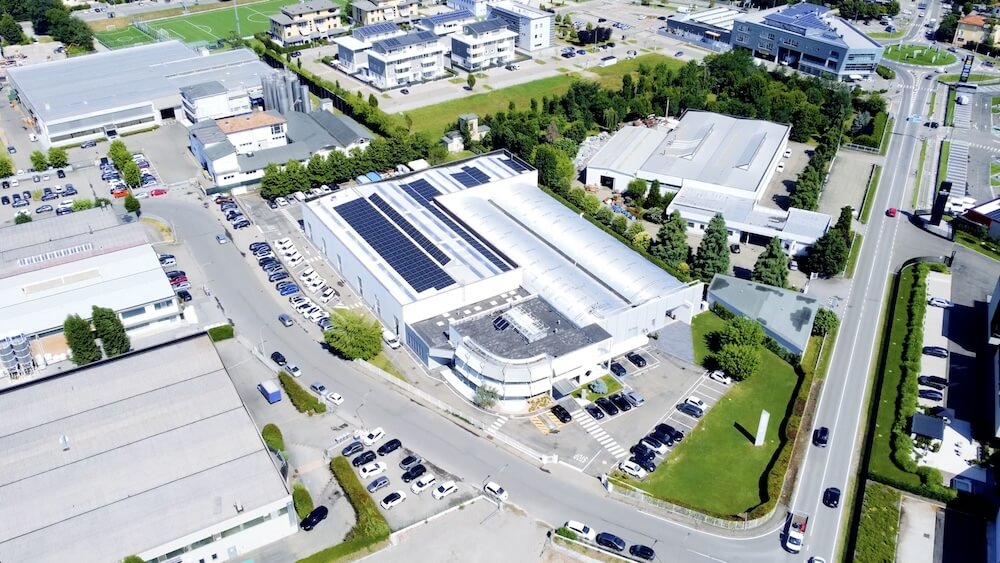
Environmental sustainability: energy from the sun
Let us now address the last part of Sicer’s second Goal for a sustainable business transition, i.e. the one related to Goal 7 of the UN 2030 Agenda: Clean and Affordable Energy.
Ceramic factories are a highly energy-intensive type of industry and therefore require significant resources in terms of both gas and electricity for the proper functioning of the processing plants. To make this sustainable, it was inevitable to define a decisive and concrete intervention in order to find energy resources from renewable sources. With this in mind, Sicer has decided to invest with conviction in photovoltaic plants, both in the Fiorano Modenese headquarters and in the multinational company’s main production facility, the Torriana plant.
The installation began in 2021, and the goal for 2024 is to use photovoltaics to produce a power of 1,300 Mwh in Torriana and 200 Mwh in Fiorano. The works were practically completed in 2023 and the plants are almost at full capacity, so much so that already this year a production of 900 Mwh has been estimated on Torriana and 100 Mwh on Fiorano, equal to about 527,00 Kg of CO2 not emitted into the atmosphere. This concrete commitment to photovoltaics has made it possible to obtain 11% of electricity from the sun in 2022, a percentage that will realistically rise to 25% already in 2023.


